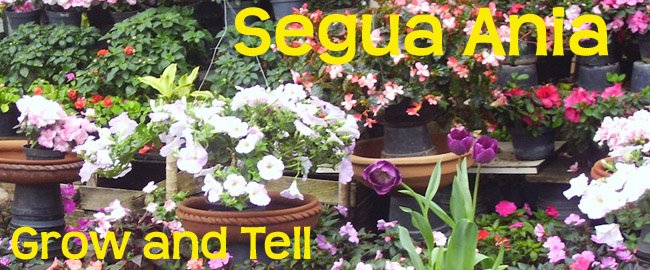And so I began looking for better ways to water my plants. I saw many an irrigation scheme on the Internet and I really liked the following:
1) Self-watering containers.
2) Ollas
3) Watering spikes
I want to talk about Ollas today.
Ollas are clay jars that you bury next to your plants, fill them with water and let the plant draw water from them as needed.
The following pictures of Ollas in action came from this web page, which is possibly the coolest post about using Ollas.
 I highly recommend you visit their main website (www.pathtofreedom.com) as it has Cool of the highest quality.
I highly recommend you visit their main website (www.pathtofreedom.com) as it has Cool of the highest quality. I really wanted to try them last year but I could find no Ollas anywhere in Kansas. On the Internet, I found a link to a non-for-profit place in New Mexico that only sold the Ollas locally.
I really wanted to try them last year but I could find no Ollas anywhere in Kansas. On the Internet, I found a link to a non-for-profit place in New Mexico that only sold the Ollas locally.This year, I found a couple of companies on the Internet that sell Ollas (for $20 and up) and a post on the Dave's Gardens web site on how to make your own using terracotta pots.
I will keep the terracotta pot idea on the back of my head for now.
While reading the Ollas post on the Path to Freedom website, I came across a post by Diana, a gardener and potter who said she may make her own ollas. I went to her blog:
http://munge.net/~diana/blog/
and left her a message about wanting to know more about her Olla making.
Here's her response for your reading enjoyment:
"David -
we had such a wet, wet summer (and I was so very, very pregnant) that I never did make ollas. I still think they’d be easy to make, though. I was thinking I’d roll slabs (you can roll clay like pie dough), wrap them around a wine bottle (covered with newspaper, so I could slide the clay off later) to get a tube form, and then slap a bottom on them. The top could be pinched in later to give it a smaller circumference. They wouldn’t be the traditional shape and wouldn’t hold nearly as much water, but they would still work as long as they were only low-fired, not high-fired. They’d just need to be replenished more often.
I’m sure there’s good clay in Kansas, you’d just have to find it (look near a river). The problem with plain old dirt is that it has much larger particles than clay, so it doesn’t stick together the same way - it just turns into mud. Clay’s particles are evenly sized, as fine as silt, and oval-shaped so they slide over each other. If I were you I’d just buy some clay: it’s not expensive. Look at Bailey’s (www.baileypottery.com) low-fire or earthenware clays. Those are clays that mature at low temperatures (1500 degrees), which is what you’re talking about if you want to fire in the old-fashioned way.
The way Native Americans did it is called a “pit firing”, which you can learn lots about just by googling that term. They basically stacked pots in among piles of dried dung and sawdusty stuff, covered and filled them with that stuff, covered the pile with wood, lit it on fire, and came back the next day to sift through the ashes. It can give you some beautiful results, but a) none of it is waterproof unless later treated with fat or wax, and b) there is a tremendous percentage of loss in a firing like this due to the unpredictability of the fire, weight, etc.
I’d encourage you to look up a local community center and see if they have an intro to ceramics program, or perhaps just a place where you can fire your stuff. Everything I know about Kansas I learned from Dorothy, but if you ever have dry summers there then I’d encourage you to experiment."
So now I have an Olla roadmap of sorts.
1) See if there is a pottery class offered at my County Extension Office.
2) Investigate where I can buy clay locally.
3) Find out who has a kiln that I can use.


Yay now I am famous!
ReplyDelete